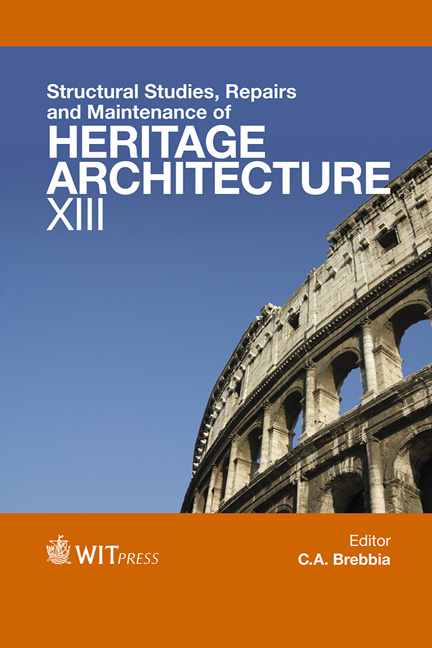A Case Of Preservation Of The Modern And Regeneration Of Old Downtown Through Civic Participatory Remodeling Procedure: Experimentation In Gwangju, Korea
Price
Free (open access)
Transaction
Volume
131
Pages
12
Page Range
123 - 134
Published
2013
Size
908 kb
Paper DOI
10.2495/STR130111
Copyright
WIT Press
Author(s)
J. Park, H. Lee & S. Yim
Abstract
The Gwangju Civic Center, the first facility of its kind in Gwangju was built in 1970. After 40 years from the completion, the necessity of reestablishment was raised due to the change of social function and the limitation of structural lifetime. In March 2010, Gwangju City decided the demolition of the Civic Center. However, a group of architectural professionals opposed the city government’s decision and claimed the preservation of modern architecture. It was based on the reuse of cultural resource. In October 2010; a careful safety inspection for the warranty of structural problem was carried out. Consequently, the building showed the possibilities of prolonging its life with the minimum repair while total reconstruction or demolition of auditorium roof. For the remodeling of the Gwangju Civic Center, the discussions about the scope of preservation and the scheme of reuse have been held by public servants, professionals and civic organizations. In October 2011, seven expert judges and one hundred citizen judges decided the winning design among the five invited designers. It was a significant progress providing citizens with a chance to conserve the historical value. In this remodeling work, we can discuss about regeneration of historical value of modern architecture as a reuse of cultural resource. The design competition also raises a question about the foremost priority in preservation projects and new birth of cultural resource. Keywords: modern architecture, regeneration, citizen judges, reconstruction.
Keywords
Keywords: modern architecture, regeneration, citizen judges, reconstruction.




